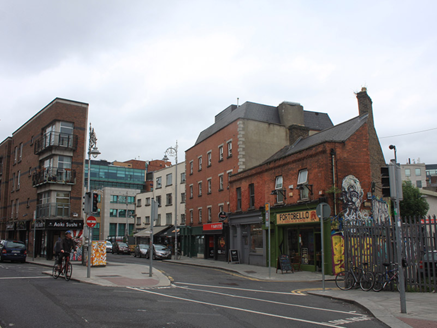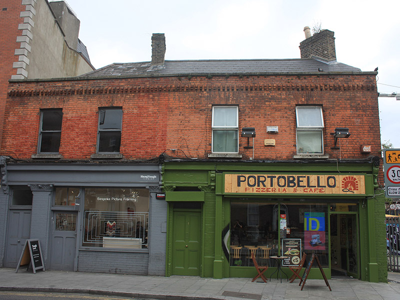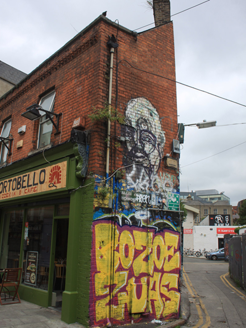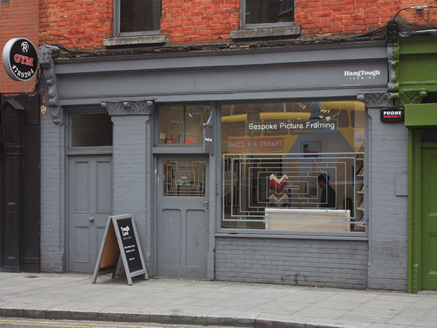Survey Data
Reg No
50110434
Rating
Regional
Categories of Special Interest
Architectural, Artistic, Social
Original Use
House
In Use As
Shop/retail outlet
Date
1880 - 1900
Coordinates
315680, 232683
Date Recorded
16/06/2017
Date Updated
--/--/--
Description
Corner-sited irregular-plan pair of two-bay two-storey former houses and shops, built c. 1890. Now in use as shop and café with accommodation over. Chamfered wall to side (south) and rear (east) elevation. Pitched slate roof, red brick parapet having cut granite coping. Brown brick chimneystacks with clay pots. Red brick, laid in Flemish bond, to wall to front (west) and side elevations, yellow brick, laid in English garden wall bond to walls to angled corner wall and rear (east) elevations. Rendered wall to north elevation. Carved brick stringcourse to front. Square-headed window openings with granite sills, chamfered jambs and mixed one-over-one pane timber sliding sash and replacement windows. Shopfronts comprising brick piers having composite capitals and carved corners supporting fasciae and cornices flanked by scrolled consoles. Square-headed display window and door openings having recent windows. Bipartite overlight and timber panelled door to shopfront to north. Square-headed door openings with timber panelled doors and overlights.
Appraisal
Though modest in form and scale, this attractive pair of houses displays a regularity of design and proportion which makes a positive contribution to the streetscape. It retains salient features, and is representative of the architectural design and materials employed in the construction of urban dwellings in the late nineteenth century, providing an interesting contrast to the Georgian terrace opposite. Decorative brickwork is used to good effect to subtly enliven the façade, while the well-composed shopfronts lend visual as well as contextual interest to the composition. Its irregular plan was dictated by its corner location. Portobello began to develop c. 1801 when the canal harbour was opened, and from this period was transformed into an area of brick housing for the rising middle class.







